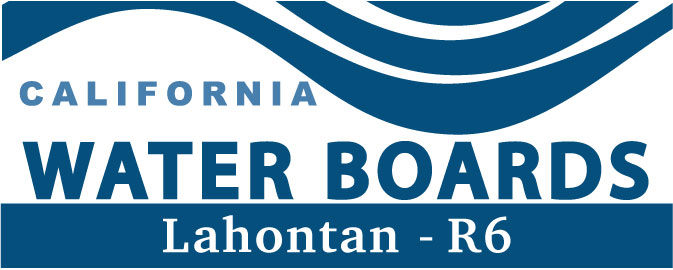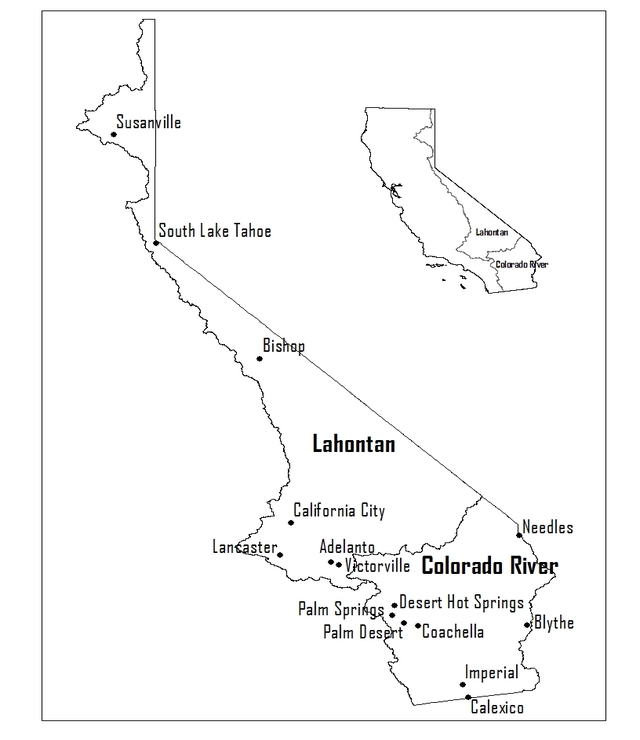
Cannabis Cultivation Program
Quick Links
Announcements
- Current Enforcement Actions
- Outreach Events
- NEW! 2023 Cannabis Wastewater Characterization Study
- Report appendices are available by request. Please email Lahontan.Cannabis@waterboards.ca.gov with the subject line "Wastewater Characterization Study appendices".
Introduction
The Cannabis Cultivation Waste Discharge Regulatory Program addresses water quality impacts from cannabis cultivation and associated activities on private property throughout the Lahontan Region and the Colorado River Basin in Eastern California. The Program focuses on Compliance Assurance/Compliance Assistance, and Education and Outreach.
In 2019, the State Water Board adopted revised requirements for cannabis cultivation to reduce impacts from discharges of waste and water diversions associated with cannabis cultivation activities. Cannabis cultivation can cause significant environmental damage, including discharges of polluted wastes to surface water and groundwater, erosion and sedimentation of surface water bodies, and illegal diversions of surface water.
The program is designed to meet the requirements of the Lahontan Basin Plan and the Colorado River Basin Plan, the California Water Code, and the Clean Water Act. The Water Boards are the principal state agencies with primary responsibility for the coordination and control of water quality. Cannabis cultivation can contribute to nonpoint source (NPS) pollution, which is the leading cause of water quality degradation throughout California. Many streams in the Lahontan Region and the Colorado River Basin Region are impacted by excess sediment, nutrients and elevated temperatures; and illegal surface water diversions intensify these water quality impacts.
Apply for Permit
General Order Overview
The Cannabis General Order implements the Cannabis Policy requirements and provides a mechanism for water quality compliance. All cannabis cultivators (indoor and outdoor) are required to apply for coverage under the Cannabis General Order.
The State Water Board resolution and adopted documents are provided below:
- Cannabis Cultivation Policy
- Cannabis General Order (Order No. WQ 2023-0102-DWQ)
- Cannabis Cultivation Policy Staff Report
Questions regarding General Order: DWQ.Cannabis@waterboards.ca.gov or 916-341-5580
Questions regarding the Cannabis Cultivation Policy: CannabisWR@waterboards.ca.gov
The Cannabis General Order provides a statewide tiered approach for permitting discharges and threatened discharges of waste from cannabis cultivation and associated activities, establishes a personal use exemption standard, and provides conditional exemption criteria for low threat to water quality activities. Tiers are defined by the amount of disturbed area.
General Order Permit Coverage
Type |
Disturbed Area |
Commercial |
Permit Coverage Status |
|---|---|---|---|
Personal Use Exemption |
< 1000 ft2 |
No |
Exempt |
Conditional Exemption
(outdoor) |
< 2000ft2 |
Yes |
Conditionally Waived, must also comply with Cannabis Policy |
Conditional Exemption (indoor) |
Not Applicable |
Yes |
Conditionally Waived, must also comply with Cannabis Policy |
Tier 1 (outdoor) |
≥ 2000ft2and < 1 acre |
Yes |
Enrollment |
Tier 2 (outdoor) |
≥ 1 acre |
Yes |
Enrollment |
Tier 1 and Tier 2 enrollees under the Cannabis General Order must characterize the risk designation based on the slope of disturbed areas and the proximity to a water body
Risk Categories for Tier 1 and Tier 2
Low Risk |
Moderate Risk |
High Risk |
|
|
|
The Cannabis Policy Attachment A, Definitions and Requirements for Cannabis Cultivation, contains surface water diversion and waste discharge requirements for cannabis cultivation related activities. Cultivators and associated property owners shall comply with all requirements in the Cannabis Policy and applicable federal, state, and local laws, regulations, and permitting requirements.
Technical Reporting
Annual Reporting in 2020
All Annual Reports in 2020 (for previous calendar/cultivation year 2019) must be completed and submitted via the Water Boards Cannabis Cultivation Programs Portal
Refer to Attachment D of the Cannabis General Order for Technical Report Guidance
| TECHNICAL REPORTS | REQUIRED FOR |
|---|---|
| Annual Report | Tier 1, Tier 2 |
| Site Management Plan | Tier 1, Tier 2 |
| Site Erosion and Sediment Control Plan | Tier 1 (Moderate Risk), Tier 2 (Moderate Risk) |
| Disturbed Area Stabilization Plan | Tier 1 (High Risk), Tier 2 (High Risk) |
| Nitrogen Management Plan | Tier 2 |
| Site Closure Report | Conditionally Exempt, Tier 1, Tier 2 |
Small Industrial Wastewater Treatment Systems General Order (Small Industrial Order)
The Lahontan Water Board’s Small Industrial Order regulates industrial wastewater discharges of a monthly average flow rate of 100,000 or less gallons per day. The Small Industrial Order covers facilities discharging through an infiltrative method or treating wastewater through an evaporative method.
Informational Brochures
| Contact Us | |
|---|---|
|
Mailing and telephone information for Lahontan Region & Colorado River Region Cannabis Programs: |
Email Addresses: |
Subscribe to our Email Lists
To receive email announcements, updates, and other information on the Region 6 Lahontan Cannabis, subscribe to our email list. To complete your subscription, please check your email account for a subscription confirmation email.
Subscribe to our other email lists. See the "Region 6 Lahontan" section.










